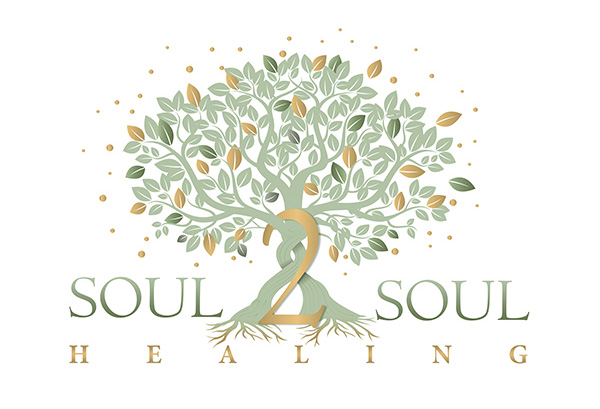Attachment styles play an important role in our romantic and platonic relationships. They are the way we relate to ourselves, others, and our environment, as well as how we form romantic and platonic bonds with people throughout our lives. This article will explore attachment styles, how they affect relationships and ways that you can work on your own attachment style to improve your relationships. It is important to understand these concepts not only in order to better understand yourself and your own behavior but also in order to strengthen the bond between you and another person.
Attachment styles can have both positive and negative effects on a relationship so it is important to be aware of them and take steps to modify any unhealthy patterns. Understanding attachment styles gives us insight into why certain relationships don’t work out, and how we can create healthier relationships in the future. By understanding our own attachment style, and that of our partners, we are better able to understand the dynamics at play in a relationship and work towards creating a healthier bond.
What is Attachment Theory?
Attachment theory is a psychological concept developed by psychologists John Bowlby and Mary Ainsworth, which looks at the way we bond with others. It is based on the idea that our attachment styles are formed in childhood and remain with us throughout our lives. Our attachment style can affect how we interact in relationships, both romantic and platonic, and how comfortable we feel about expressing our emotions to others.
Understanding Your Own Attachment Style
Understanding your attachment style is key to creating healthy relationships. It is important to be aware of the type of attachment you have and how it affects your relationships, as well as ways that you can work on forming healthier connections.
When exploring your attachment style, there are a few questions you can ask yourself. What kind of feelings do I experience when in close relationships? Do I feel secure and confident or anxious and scared? Do I struggle with trust issues or communicating my needs effectively? Answering these questions will help you gain more insight into how your attachment style may be impacting your relationships.
It is also helpful to learn about different types of attachment and how they manifest in relationships so that you can better understand your behavior and the behavior of others. Additionally, it is important to recognize that attachment styles can change over time with the right support and growth. If you identify unhealthy patterns in your relationships, reach out to a therapist to help develop healthier ways of connecting with people. By understanding your attachment style, you can learn how to create stronger and more fulfilling relationships.
The Four Types of Attachment Styles in Adult Relationships
Secure Attachment
A secure attachment is the most favorable attachment style, characterized by a robust bond with another individual. Individuals who exhibit secure attachment are self-assured in their capacity to depend on others and seek support. They effortlessly communicate and accept affection, and can openly discuss sensitive subjects such as emotions and intimacy without apprehension. Those with secure attachment recognize the importance of balance in relationships, ensuring that their own needs do not overshadow the needs of others. If both parties in a relationship strive towards secure attachment, they can foster growth and development. It is essential to accept one’s current position while demonstrating a willingness to evolve.
Anxious-Preoccupied Attachment
Anxious-preoccupied attachment is marked by an intense longing for closeness and connection with other people, but also an inability to fully trust them. People with this type of attachment are insecure, so they may overly cling to their partner and become jealous or possessive. They often struggle with communication and expressing their needs, leading to them feeling misunderstood or unappreciated by their partners.
Dismissive-Avoidant Attachment
People with a dismissive-avoidant attachment style are independent and avoid relying on others for emotional support. They may appear to be self-sufficient but in reality, they often struggle with forming meaningful relationships due to their fear of closeness or vulnerability.
Fearful-Avoidant Attachment
People with fearful-avoidant attachment struggle with forming close connections and often feel like they are not worthy of love. They may create walls around themselves to protect their emotions and keep other people out, making it difficult for them to open up and form intimate relationships. They often lack trust in others due to their fear of abandonment, leading to feelings of insecurity and instability in relationships.
They often have difficulty expressing their feelings due to a fear of being vulnerable or getting hurt, which can lead to communication issues within the relationship. Fearful-avoidant individuals may also be prone to clingy behavior as a way of coping with their fear of abandonment. Although this behavior can make the other person feel suffocated, it is important to remember that it comes from a place of fear and insecurity.
Strategies for Coping with Differing Attachment Styles in a Relationship
When two people have different attachment styles, it can be challenging to create a healthy relationship. It is important to understand that each person may have different needs and expectations due to their individual attachment style. Here are 5 strategies for coping with different attachment styles in a relationship:
1. Communication
Open communication is essential for any relationship, but even more so when you are dealing with varied attachment styles. Talk openly about your needs and expectations and make sure both partners feel heard and respected. Learn how your partner communicates best – whether it be through verbal or physical communication – and try to adapt accordingly.
2. Respect Boundaries
Everyone has boundaries and it is important to respect each other’s comfort levels when it comes to physical and emotional closeness. Be aware of your partner’s needs and try not to push for more than they are ready for.
3. Compassion
Both partners should strive to be understanding and compassionate towards each other, even when there is a difference in attachment styles. Validate the feelings of both parties and avoid any blaming or shaming behavior as this can only make matters worse.
4. Empathy
Walking in each other’s shoes can help build empathy between two people with different attachment styles. Try to look at the situation from your partner’s point of view and respond accordingly instead of reacting out of frustration or anger.
5. Support
Offer support to your partner in whatever way they need, whether through verbal reassurance or physical affection. Having a supportive and understanding partner can help bridge the gap between two different attachment styles.
With these tips, you can work towards creating a healthy relationship with someone who has a different attachment style than you. Remember, it is possible to create fulfilling relationships despite having different attachment styles – all you need is patience and understanding!
Therapy for Unhealthy Attachment Styles
It’s important to reflect on which attachment style you have a TENDENCY to default to (ex. anxious/insecure when in fear of someone abandoning you) – this may not be you ALL THE TIME but there is a tendency to go back to the one that was developed in childhood. They may move between them ex. anxious/insecure when feeling abandoned and then become more avoidant when afraid or feeling shame. The goal is to move toward secure attachment and build awareness around what triggers these attachment styles and tendencies – and what steps you can take to feel more secure in them (with friendships, family members, co-workers, and intimate partners, etc.)
Therapy can be an effective tool for those struggling with unhealthy attachment styles. Through therapy, individuals can gain insight into their own attachment style and learn how to create healthier relationships. Our therapists at Soul 2 Soul Healing helps clients understand the impact of their attachment style on their current relationships and develop healthy coping strategies to manage emotions in a more positive way.
It is important to remember that everyone has different needs when it comes to building trust and forming close connections, so having a psychotherapist who understands this can make all the difference. Those with unhealthy attachment styles can learn how to build lasting, meaningful relationships with guidance and support. Soul to Soul Healing provides compassionate care that focuses on helping clients reach their goals in navigating healthy attachments in relationships.
Contact Soul 2 Soul Healing Today to Schedule Your Free Consultation!




